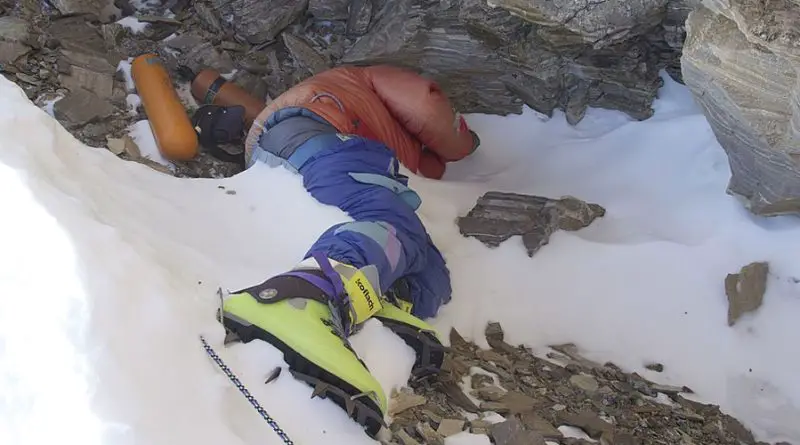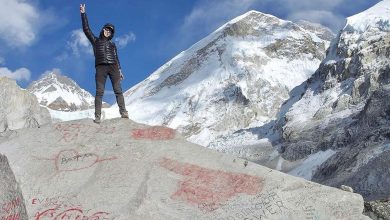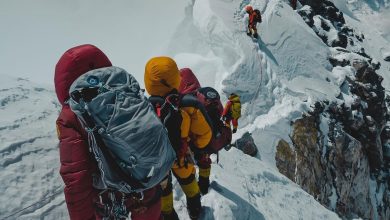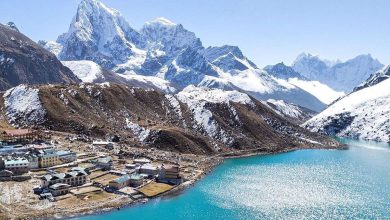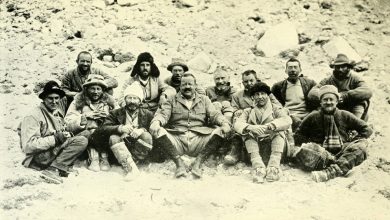Mount Everest Dead Bodies
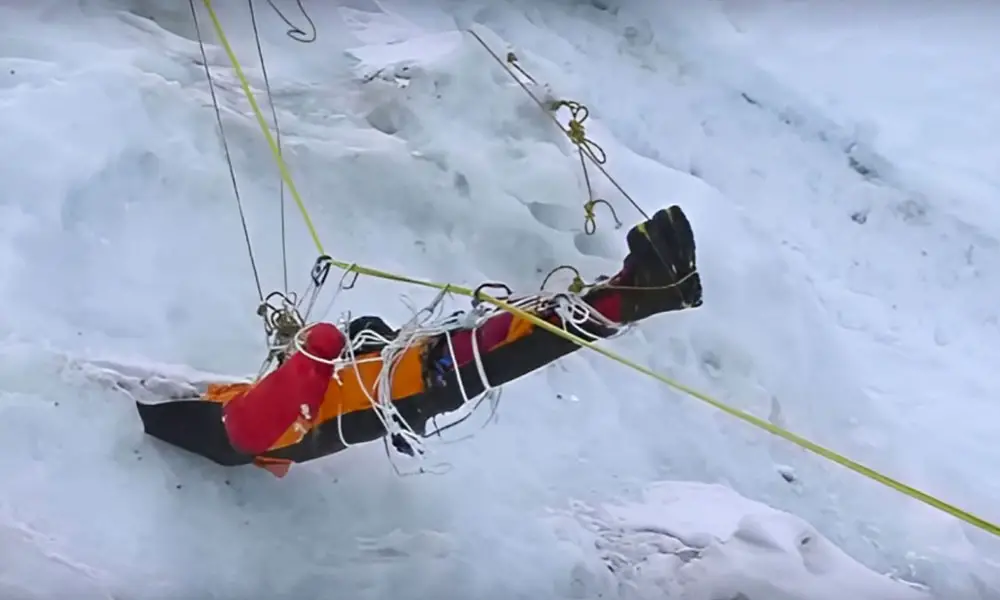
Mt. Everest at an elevation of 8,848.86 meters, is the tallest snow-capped mountain in the world. The scaling of the tallest mountain in the world, also known as a third pole, is a dream of many mountaineering enthusiasts.
From 1922 to 20th May 2023, a total number of 193 members and 125 Sherpas died trying to scale the tallest mountain in the world from both sides and all routes.
But, living the dream of the conquest of the tallest natural snowy structure isn’t as easy as it seems. According to the data collected from the Himalayan Database, the cold weather and treacherous path to the top of the world claims 6.2 climbers per year on average.
Thousands of climbers flock to Mt. Everest every year in an attempt to reach the summit of the tallest mountain in the world. Things are unlikely to always go according to the plans in such a harsh and cold environment. Sometimes, the bad weather and frigid temperature get in the way, most of the time, the oxygen is limited in the unexpectedly prolongated route, and other times it’s injuries or sickness.
Even the slightest blunder can prove to be fatal at such an altitude; it’s always life and death on the expedition to Mt. Everest until the safe ascend to the top and descent to the base camp.
Mount Everest Dead Bodies | How Many People Have Died Climbing Mount Everest?
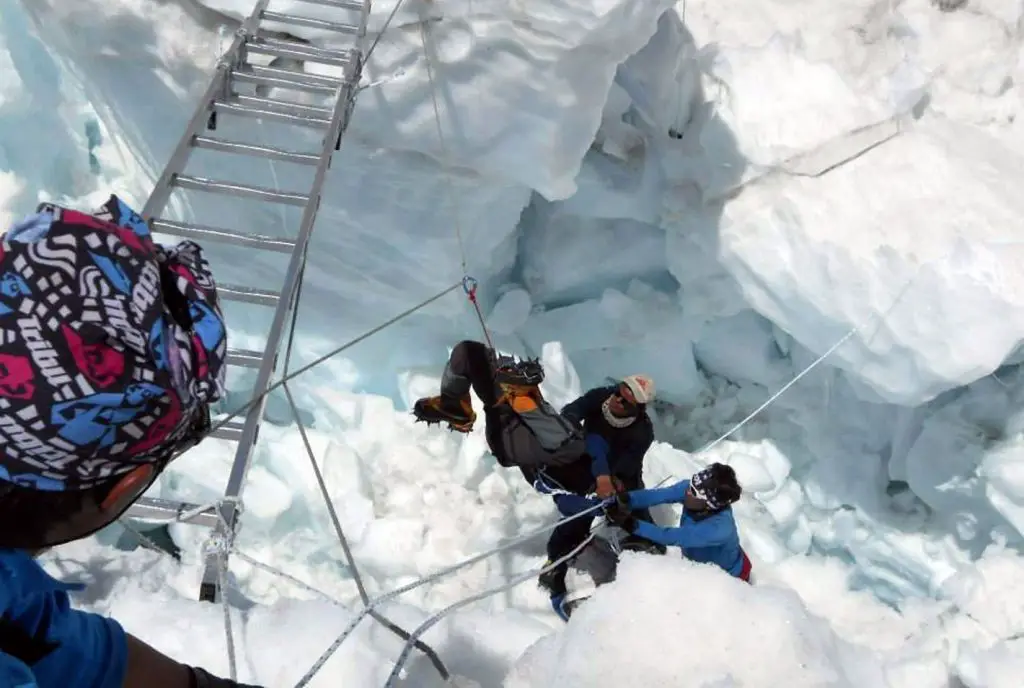
Despite being the one of most difficult climbing routes in the world, the tallest snow-peaked wonder’s magnificence draws mountaineering enthusiasts from all over the world. Even after acknowledging the risks of scaling this massive peak, Mt. Everest has always been a threshold for the mountaineering spirit. It’s as if the conquest to the top of the world determines the validity of their adventurous spirit.
But, admirable determinations always don’t guarantee the safety of the climbers. Many adventurers have come forth to claim victory over Everest, but the treacherous paths and harsh environment of the high-altitude mountain have often flipped the table pushing the climbers to peril. So, how many people have died climbing Mount Everest?
Among the over 323 deaths from 1992 to 2023, the top cause for the death of the expedition team and Sherpa guides are avalanches. The sudden slide of masses of snow on the routes of Mt. Everest has claimed 78 lives. Similarly, falling from the snowy slopes accounted for 72 Mount Everest Deaths, exhaustion for 28 deaths, AMC (Acute Mountain Sickness) for 38 Mount Everest deaths, exposure for 26 lives, and other non-AMS-related illness claimed 27 lives.
Top Years for Death in Everest
| Year | Casualties |
| 1982 | 11 |
| 1988 | 10 |
| 1996 | 15 |
| 2012 | 12 |
| 2014 | 16 |
| 2015 | 19 |
| 2019 | 11 |
| 2023 | 11 |
Although the Mount Everest death’s rate on the climb of Mt. Everest is at 1% according to the data from the past 30 years. And, death to successful attempts is at 4%. However, it doesn’t mean that the scalings’ success rate indicates how much easier the way to the top of the world is.
When things go wrong, it is even hard for the most prepared mountaineers because it doesn’t take that much time for things to turn ugly from bad. Even a slight mistake in such a cold high-altitude region could be fatal.
In fact, on the route, while ascending to the summit of Mt. Everest, the climbers can see numerous dead bodies preserved on the snowy slopes. The climbing community believes there are more than 200 bodies on the tallest mountain in the world. Some of them are along the trail on both sides of the mountain whilst other bodies are lost forever in the snow.
Why Mount Everest Dead Bodies Are Not Brought Down?
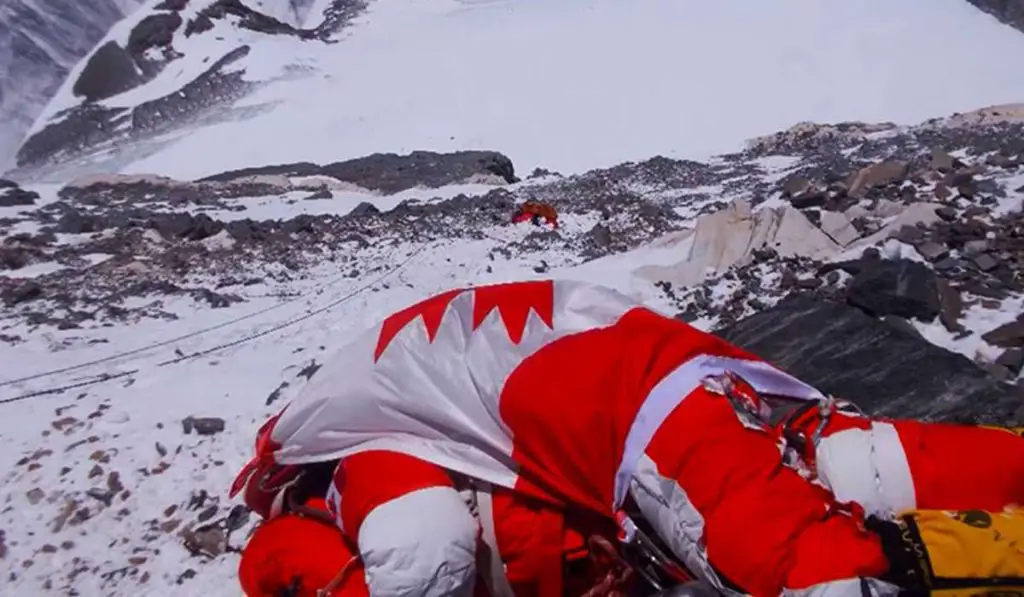
Slightly moving ahead from the How Many People Have Died Climbing Mount Everest question, why aren’t the Mount Everest dead bodies brought down?
Well, the answer is pretty simple. The process of recovering the body from such a high-altitude mountain with such a dangerous trail is almost good as impossible. As the body resting above Base Camp 2 cannot be retrieved by a helicopter, the bodies need to be carried down to the point where a helicopter flight is possible.
But, the death tolls are high in the death zone, a section commonly referred to above 8,000 meters altitude. The oxygen pressure in the death zone drops so drastically that even the expert don’t recommend staying in the zone for more than 16-20 hours. So, locating the dead bodies, digging them out, and carrying them to the lower base camp isn’t easy and quite applicable as it sounds.
Also, although rates of deaths of Everest in the lowers sections are comparatively lower and not that often, still carrying a body down can put the retriever teams at great risk.
Not to mention that carrying down Mount Everest dead bodies is extremely expensive. The operation that needs the rescue team to dig out the body and carry it all the way down to the base camp takes a group of experts. And, the cost for such a search and retrieve team can easily climb up to more than $70,000.
But, the retrieval isn’t always guaranteed, for instance, the rescue team that set out to retrieve the body of British mountaineers George Mallory and Andrew Irvine in 1999, could only retrieve the body of Mallory. Irvine was forever lost in the snow of the Everest slopes.
Furthermore, leaving the dead bodies at the mountain is also a tradition adapted from the sea voyage in mountaineering. Like the dead adventurers who are given sea burial as an honor, leaving these mountaineers to rest in the snow at the top of the world is also considered honoring their adventurous spirit.
Famous People That Have Died On Everest
| Name (Age) | Date | Elevation | Nationality | Cause Of Death |
| Francys Distefano – Arsentiev (40) | May 24, 1998 | N.E. Ridge | United States | Exposure and/or cerebral oedema |
| Tsewang Paljor (28) | May 11, 1996 | 8600m N.E. Ridge | India | Exposure |
| David Sharp (34) | May 15, 2006 | 8600m N.E. Ridge | United Kingdom | Exposure and/or exhaustion |
| George Mallory (37) | June 9, 1924 | 6400m | United Kingdom | Possible ice axe injury following a fall. |
| Hannelore Schmatz (39) | October 2, 1979 | 8400m S.E. Ridge | West Germany | Exposure, exhaustion |
| Rob Hall (35) | May 11, 1996 | South Summit | New Zealand | Exposure |
| Scott Eugene Fischer (40) | May 11, 1996 | 8300m S.E. Ridge | United States | Suspected HACE, exhaustion, frostbite and exposure |
| Shriya Shah-Klorfine (33) | May 19, 2012 | Below Balcony 8300m | Canada | Exhaustion |
| Nobukazu Kuriki (36) | May 21, 2018 | Camp II | Japan | Hypothermia, had previously reported “persistent cough and pain” |
1. Francys Arsentiev- The Sleeping Beauty
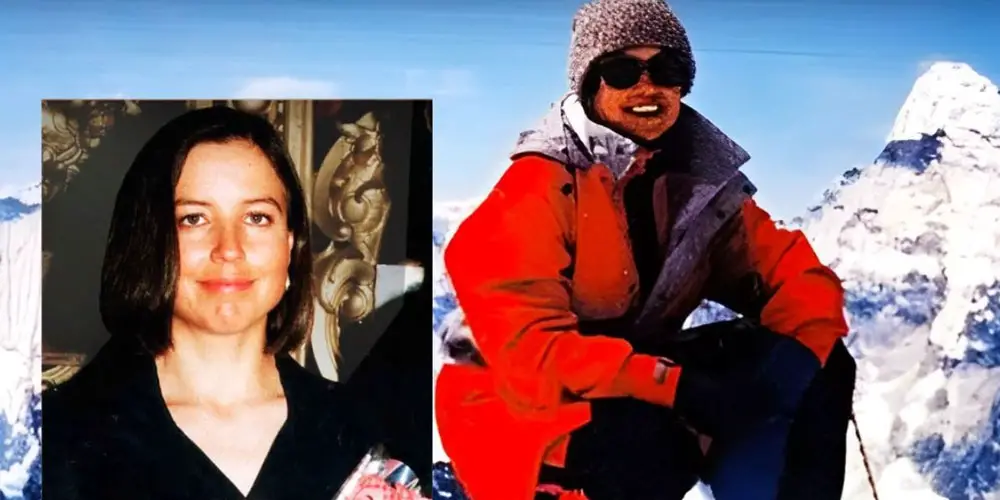
The American couple Francys Arsentiev and Sergei Aresentiev set out on a conquest to scale the tallest mountain in the world in 1988. Francys was trying to set her name in history as the first-ever American woman to summit the Everest without oxygen.
She even successfully ascended to the top of the Everest setting her name in the history of mountaineering. However, she wasn’t able to make a successful descent. Francys and Sergei got separated in Base Camp 6 during their descent. An expedition team from Uzbekistan found her, she was suffering from severe frostbite. The Uzebekistani team also gave her a new oxygen tank and tried to help her down.
As Francys wasn’t able to stand, the Uzebekistani also tied a rope to her and tried pulling her down, however, they eventually had to leave her to save themselves. Francys’ husband, Sergei, who tried to rescue her after not being able to locate her at the base camp also disappeared.
The sleeping beauty name given by fellow mountaineer Ian Woodall is resting on Mt. Everest covered by an American flag and a teddy bear doll on her side.
2. Green Boots- Tsewang Paljor
After the ‘Sleeping Beauty’ the ‘Green Boots’ is one of the most famous Mount Everest dead bodies. Before the removal (2014), the dead body of Tsewang Paljor rested near a cave on the ascending trail that every climber must pass through.
As the cave is used by more than 80% of climbers as a resting zone, the body was hard to miss. Paljor was an Indian climber scaling Mt. Everest in 1996, but, after being caught in the ‘Everest Disaster’, he lost his life. A fast-moving blizzard hit several groups that were on their descending trail, and eight people lost their lives in one of the most deadliest disasters on the slopes of Everest.
Paljor separated from his expedition group tried taking shelter at the small cave and huddled inside for protection from the blizzard, however, the cave became his resting place.
See also: Rainbow Valley Everest
3. David Sharp
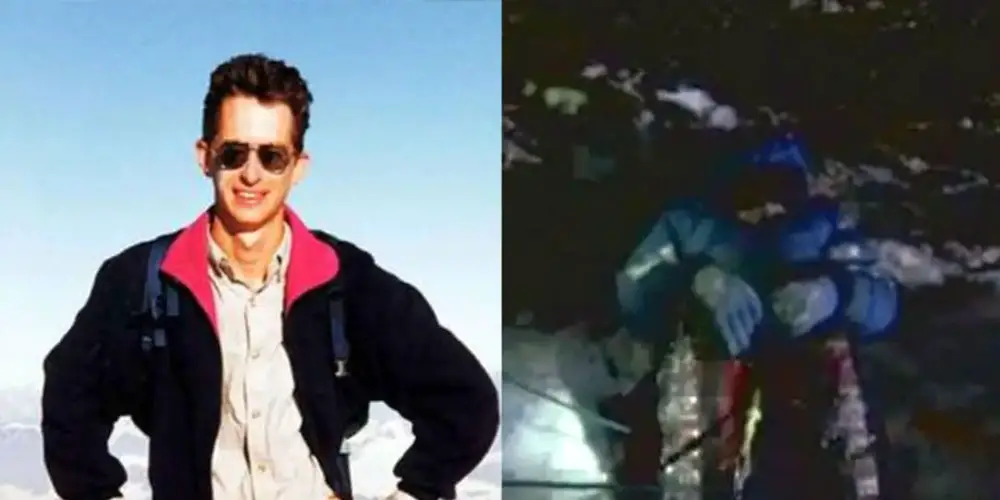
An English mountaineer, David Sharp, set out on an expedition to the tallest mountain in the world in 2006. He was part of an organized expedition, however, as the weather was not in favor of climbing, the rest of the expedition group wanted to return to a safer altitude.
Sharp decided to push to the summit of Everest by himself even when the rest of the group started descending. He chose a cave to rest in during his ascend, incidentally, it was the same cave where one of the most popular Mount Everest dead bodies, Green Boots was resting. He froze in the cave and slowly awaited his death on Everest as more than 40 climbers passed by the cave.
One of the Sherpa’s expedition group did see him in the cave but like other climbers taking rest, they thought Sharp was just resting. During their descent, they found him still in the cave suffering from hypothermia, frozen limbs, and frostbite. They gave Sharp oxygen and tried helping him climb down, but as he was unable to move, they left the freezing climber with oxygen and a blanket.
The Sherpas did return with help to carry down Sharp after reporting the incident in the base camp, however, by the time they reached him Sharp had already passed away. His body was later moved away from the cave at the request of his family to a different resting place on the slopes of the mountain.
4. George Mallory
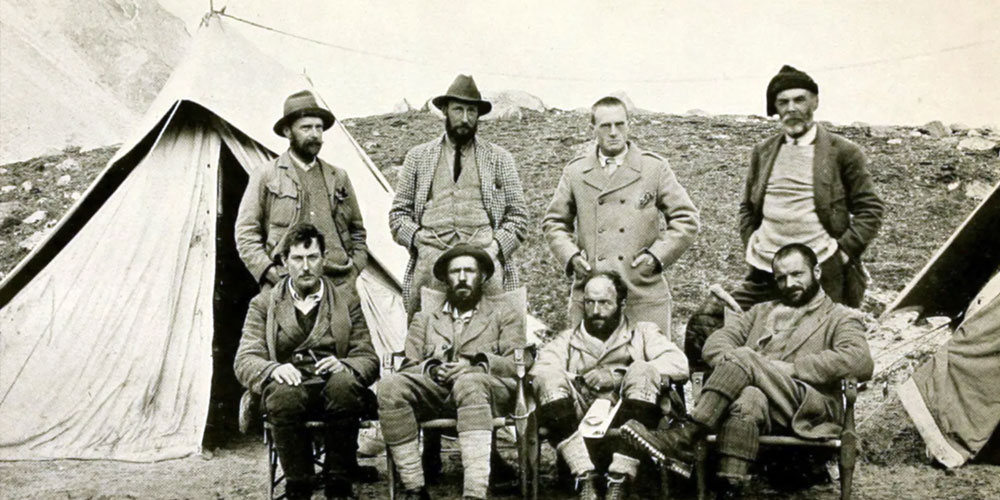
George Mallory was on the earliest expeditioners trying the scale the summit of the tallest snow-capped peak also known as ‘The Third Pole’ for the first time. He set out on the expedition to Mt. Everest from 1921, after two failed attempts by the British expedition team in 1921 and 1922, his third attempt in 1924 would be his last.
The British expedition team lost sight of Mallory and Andrew Irvine on 8th June 1924 around lunchtime when a squall hit and separated the team members. After 75 years, a dedicated retrieval team was sent to Everest to collect the bodies of Mallory and Irvine who also were debated to be the first climber of Mt Everest.
Conrad Anker, a famous American Mountaineer, found the body of Mallory at an elevation of around 8,230 meters. The retrieval team was able to identify the body with the help of an identity tag, but they were not able to locate Irvine, who was filming the British expedition.
Mallory’s body was found with fractured legs, indicating that he had taken a fall and was unable to proceed to the trail. The high-altitude wind and the weather had also stripped clothes and skins of several parts of his body, but, the rest of his body was well preserved on the snowy slopes of the mountain.
5. Hannelore Schmatz
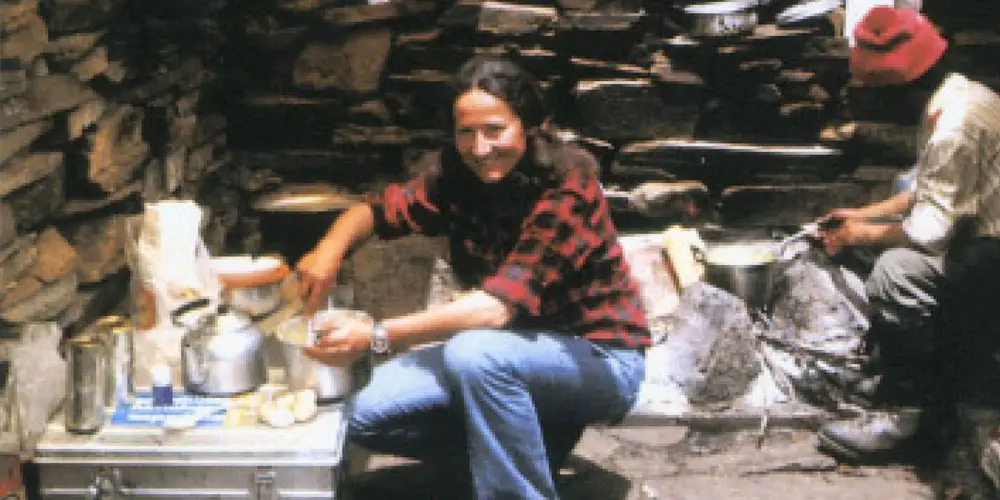
Hannelore Schmazt, one of the most well-known Mount everest dead bodies, tells the tale of the cruel and horrifying slope of Mt. Everest. Schmatz in a 1979 expedition with her husband Gerhard, set out for the scaling the mountain, but the terrible weather condition of the region took her life during the descent.
Schmazt and her husband were experienced mountaineers, during the final push to the summit, the expedition team divided into two teams. Gerhard was leading the first team and after the summit returned safely to Everest Base Camp 3.
However, Hannelore’s second team did reach the summit of Everest but the descent didn’t go the way they planned. Hannelore and another fellow climber Ray Genet wanted to make a shelter for rest because of the exhaustion. The region they selected was inside the death zone (higher altitude than 8,000 meters), despite Sherpa team members warning they set up camp in the region.
Although Schmatz managed to survive the snowstorm that hit the region overnight, her body gave in to exhaustion and frostbite on her way down to the base camp. She was just 330 feet away from the base camp.
Hannelore Schmatz first German citizen and the first-ever woman to lose her life on the slopes of Everest.
6. Rob Hall
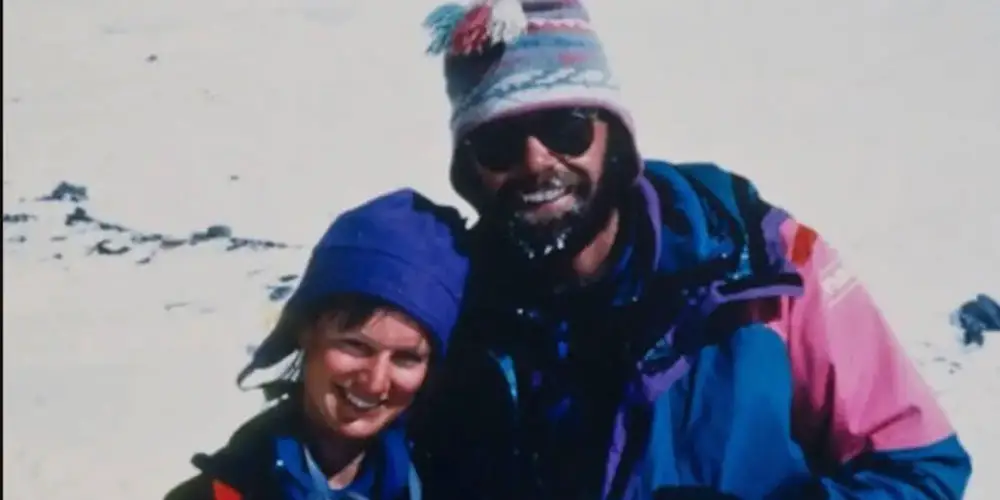
The 2015 movie, ‘Everest’ was based on the story of Rob Hall, one of the most famous Everest dead bodies. Hall was an experienced mountaineer and a guide in his company ‘Adventure Consultants’. In 1996, like the Green Boots, Rob was also caught in the ‘Everest Disaster’, a deadly blizzard that killed 8 people hitting several expedition groups.
Hall along with his friend Gary Ball, completed the Seven Summits Challenge in 1990. In the May of 1996, he was leading a team expedition for his company to Mt. Everest when a deadly blizzard hit the slopes of the mountain. On his way to descent after a successful summit, Hall met another climber Doug Hanson who was struggling to reach the top.
Although a Sherpa in the expedition team had told Hanson to abandon the climb and descent to base camp. Dough Hanson who had turned back just 300 meters from a 1995 expedition with Hall, stayed determined to make it to the summit. Hall stayed with Hanson and asked the Sherpa members to guide other clients down.
Hall and Hanson’s duo did make it all the way to the summit, however, on the climb down the slopes they were hit by the devastating blizzard. They were stuck in the death zone for more than 12 hours. Hall radioed for help as Hanson was unconscious after the blizzard, another expedition member, Andy Harris started climbing up with oxygen to help the duo. But nearly half a day later, Hanson radioed the base telling Hall had passed.
Hanson connected Hall to his wife via radio, his last words to her were:
“Sleep well, my sweetheart. Please don’t worry too much.”
7. Scott Fischer
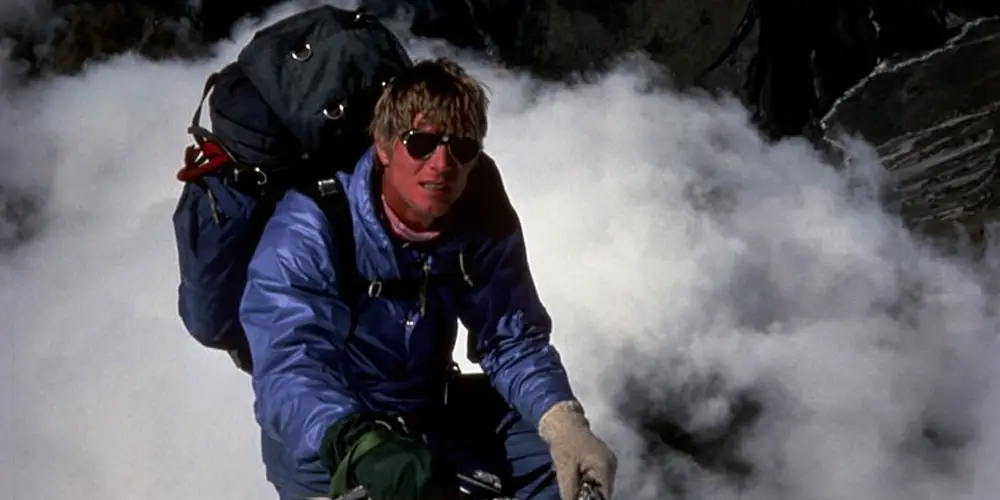
Scott Fischer was another main guide leading the Everest expedition in 1996, as portrayed in the 2015 film ‘Everest’. Fischer led his ‘Mountain Madness’ client to the summit of the mighty Everest, but during the descent from the slopes collapsed to the mountain exhaustion.
Fischer successfully led his Mountain Madness clients to the summit of Everest, despite several hindrances like hold-ups and a descent he had to make to help a sick friend. However, on the way down to the base camp, the deadly blizzard of 96’ also hit Fischer’s expedition group. Knowing he would only hold back the team, Fischer sent his Sherpa member to take clients ahead to the camp. Two Sherpa including the fellow Mountain Madness guide, Anatoli Boukreev, did come back to help Fischer climb down the slopes, but, by that time, he had already passed away.
Boukreev moved dead Fischer’s body from the main path and covered it honoring his legacy.
8. Shriya Shah – Klorfine

The year 2012 was another disastrous year on the slopes of the tallest mountain in the world, 12 people died on the route of the Everest expedition from April to May. But, unlike other years when blizzards or avalanches did not hit the expedition teams, climbers died on the slopes of Mt. Everest due to exhaustion.
The overcrowded region in the death zone took the life of the climbers who were climbing slowly waiting for their turn in the queue and who didn’t pay proper heed to altitude sickness. Due to congestion in the death zone with the limited oxygen, the climber started dropping one by one.
Shriya Shah Klorfine, born in Kathmandu Nepal, a Canadian resident was one of the climbers who lost her life due to exhaustion in the death zone in 2012. After Shah’s death on Everest, her body was covered with the Canadian flag as a sign of respect, later her body was moved from Everest by helicopter and handed over to her family in Kathmandu.
Shah reached the summit at around 2 p.m. after climbing for 17 hours, on her way to the base camp she collapsed on the slopes. Many speculated that the Canadian mountaineer spent too much time at the summit taking videos.
But, 11 more Mount Everest deaths due to similar conditions cannot justify the deliberate excuses giving specific reasons to every climber. Shah’s childhood dream was the conquest of the tallest mountain in the world, and her passion intermingled with patriotism, thoughts of doing something for her country drove her to the conquest journey.
The last words she whispered to a close friend as she collapsed was ‘Save me’.
9. Nobukazu Kuriki
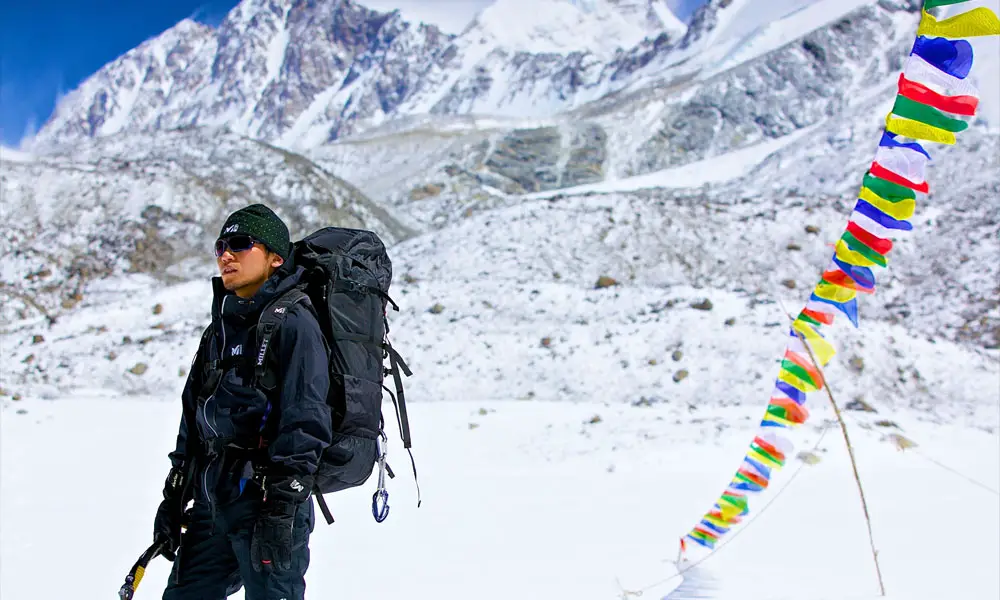
Japanese climber Nobukazi Kuriki is another inspirational mountaineer who attempted to reach the summit of Mt. Everest on several occasions. But, during his eighth attempt to scale the tallest snow peak in the world, all the way to the top, Kuriki lost his life on its slope in May 2018.
The Japanese mountaineer passed away near Everest Base Camp 2 at an altitude of 6,400 meters. He started feeling sick at the elevation around 7,400 meters and as he was descending to the base camp, Kuriki fell to his death on Everest. In his conquest of the ‘Seven Summits’, the Japanese mountaineer had already scaled to the top of the other six peaks leaving only Everest to claim the Seven Summiter title.
Kuriki in one of his several attempts to scale Everest all the way top, lost all nine fingers to frostbite in a 2012 expedition. He set out on another climbing expedition after the devastating earthquake in 2015 killed 19 people on Everest, first-attempt by a team after the devastating incident. However, the poor weather halted his expedition, Kuriki stated that his 2015 attempt to scale Everest was to let know that,
‘Nepal is safe for Toursim’
But, tragically the Japanese mountaineer lost his life at the slopes in his eight-attempt after slipping approximately 100 to 200 meters in his sick body. His camera crewmembers searched for him and when they found him there was no sign of life.
You may also like:
- Dangers of Climbing Mount Everest
- How Many People Have Climbed Mount Everest?
- How Hard Is It To Climb Mount Everest?
FAQs About Mount Everest Dead Bodies
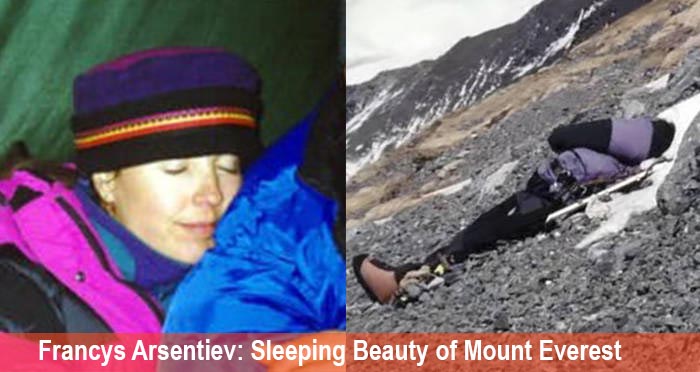
What is the oldest corpse on Mt. Everest?
The oldest known corpse on Mt. Everest is of British mountaineer George Mallory. He died in 1924 on his 3rd expedition to Everest, and his body was collected only after 75 years in 1999.
How many days does it take to climb Mt. Everest?
The trekking journey to the Everest Base Camp takes around 19 days in general. And, climbing the tallest mountain in the world takes another 40 days.
How old was Green Boots when he died?
Born in 1968, Green Boots a.k.a Tsewang Paljor was 28 years old when died on his 1996 expedition to the mountain after getting caught in the ‘Everest Disaster’.
Is sleeping beauty still on Everest?
Yes, the sleeping beauty a.k.a Francys Arsentiev is still on the slopes of Everest warped by an American flag and tucked in with a teddy bear doll on the side.
Why don’t they remove bodies from Everest?
The retrieval of dead bodies from the Mount Everest death zone is almost as impossible, only a few bodies leave the deadly slopes of Mt. Everest, it is also an expensive operation that costs more than $70,000.
